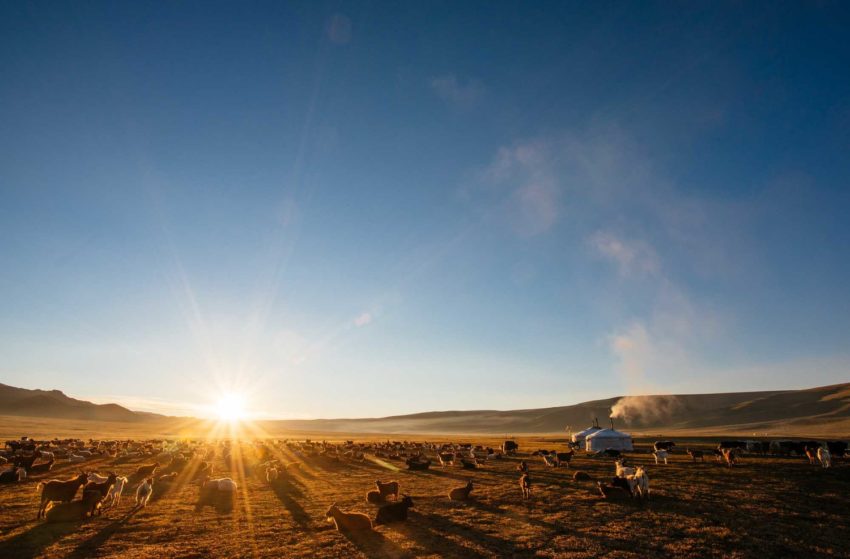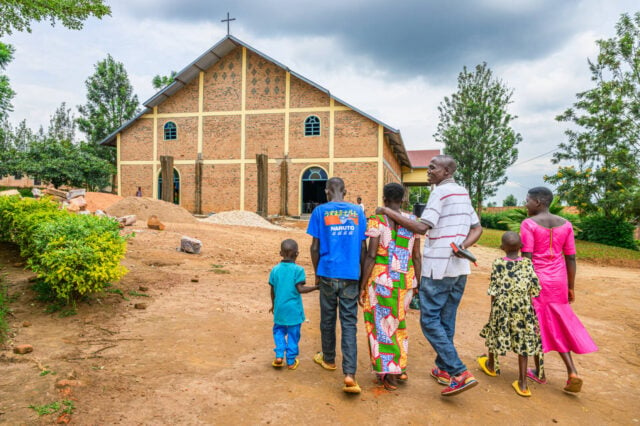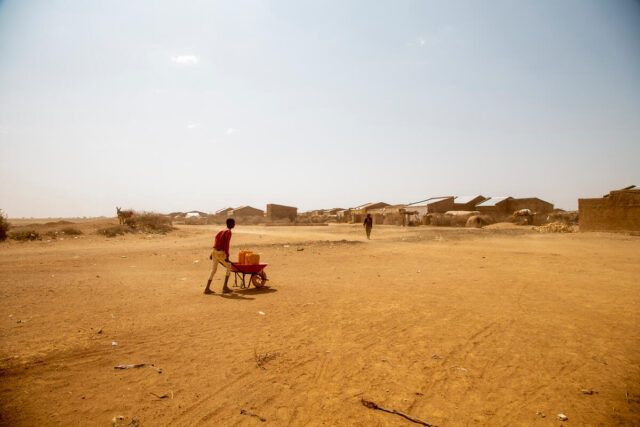World Vision’s award-winning photographers travel around the world every year, capturing moments of God’s grace and faithfulness as we follow Jesus’ example to show unconditional love to the poor and oppressed. They bring back stories that inspire us to action and compassion.
Discover what’s it like behind the scenes during some of these moments.
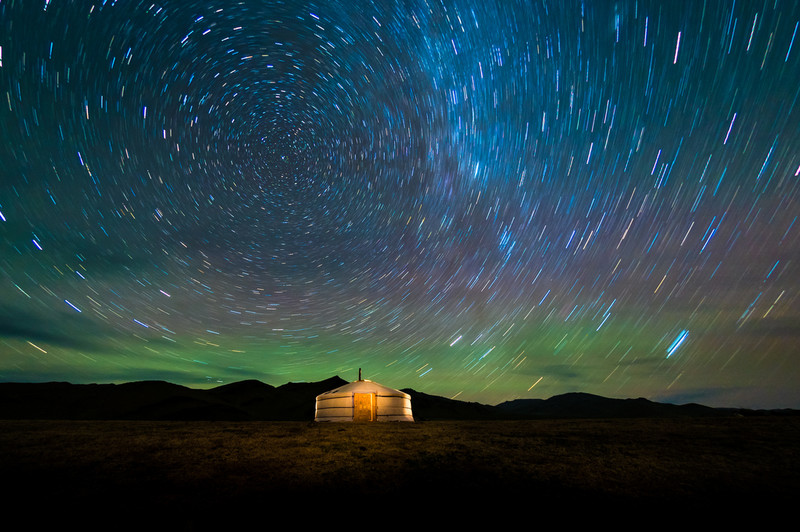
Camels and constellations
Written and photographed by World Vision photographer Jon Warren
Nikon D750 camera
10.5mm lens, 15 minutes at f/4, 320 ISO
* * *
To pose or wait for real life to happen?
Photographers have two options for making pictures. You can make a picture happen, pre-visualizing an end result, setting up lighting, and arranging people or props.
Or you can do the exact opposite — wait for life to happen, see a picture unfold, and record it.
On a recent trip to Mongolia, I used both approaches.
Mongolia is home to the world’s most spectacular camels, double-humped Bactrians, and we were on the edge of the Gobi desert, their habitat. My World Vision colleague, Robert Coronado, and I had a crazy idea for a Christmas card — posing three camels next to a ger, the traditional home in Mongolia, like the biblical magi on their journey to find the Christ child.
Local World Vision staff assured us this was possible. We drove for several hours across the steppe to see their friend, a local camel herder. He had 50 semi-wild camels about half a mile away, and he said there was no way three of them would come to the ger alone without the rest of the herd.
And that’s when it got interesting. Racing over the horizon came a stampeding crush of camels, magnificent, unruly beasts charging through the dust right at us. I grabbed a camera with a 70-200mm lens and prayed I was getting something in all the chaos.
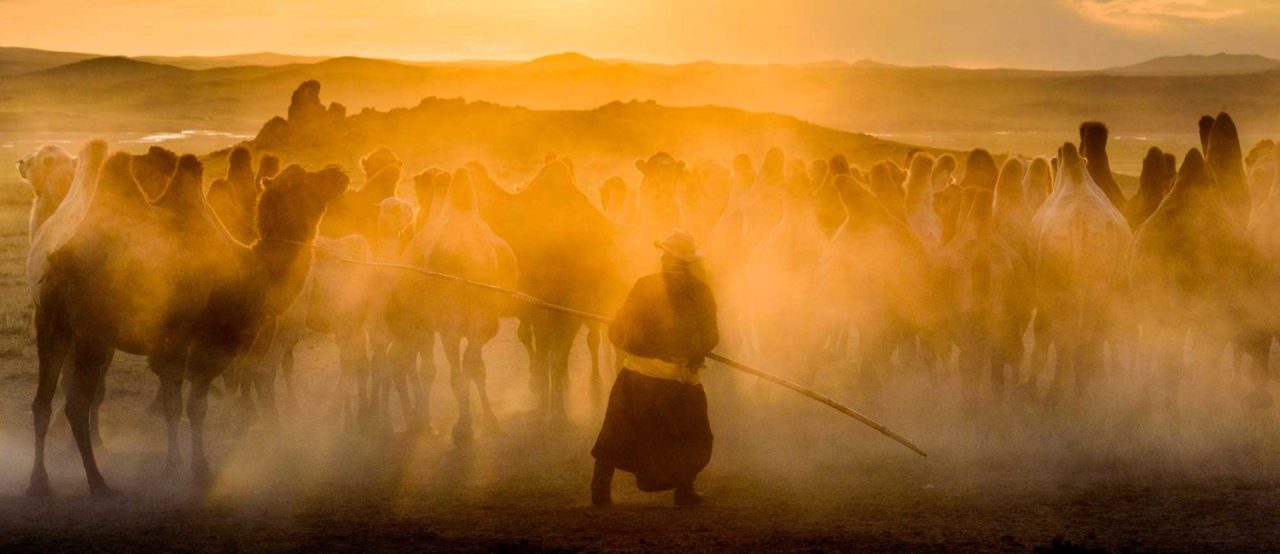
Finally, the herder and his workers were able to lasso three camels, and with constant coaxing, persuaded them to stand next to the ger, where Robert had hung a string of battery-operated Christmas lights on the door. The rest of the herd kept a close watch nearby as I clicked and clicked and clicked, hoping for just one moment where none of the camels were biting each other or poking their handlers or looking back to check on their friends. I alternated between a 24mm lens and a fisheye, needing to stay close because of clutter, while still showing the big, expansive sky.
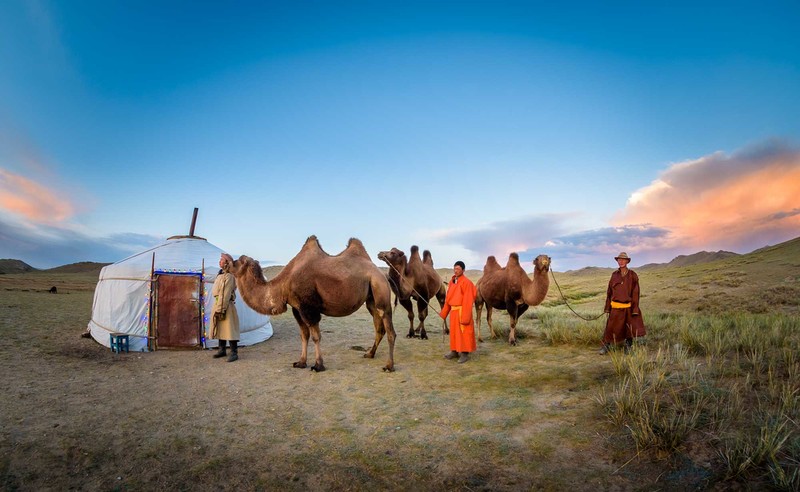
Ironically, the pictures of the camels coming to our setup scene made much more interesting pictures than what we staged. Real life trumped anything I could imagine.
For most of our first week, we stayed in a ger next to a family who had received help from World Vision to revive their herd of sheep, goats, and yak. I rolled out of my sleeping bag each morning before sunrise and spent the rest of the day trying to record some of the amazing moments happening in front of me.
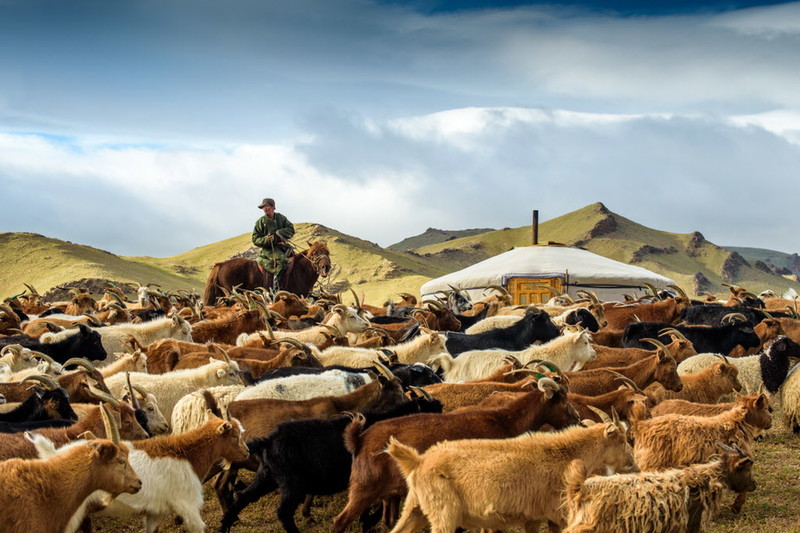
There was one more setup photo I wanted to try: the ger at night, with stars in the sky. At first, I tried it with relatively short shutter speed to freeze the stars — 30 seconds at 2500 ISO. Colleagues helped me “paint” the ger with a little flashlight I had in my bag — quick strokes shielding the light from the lens of the camera.
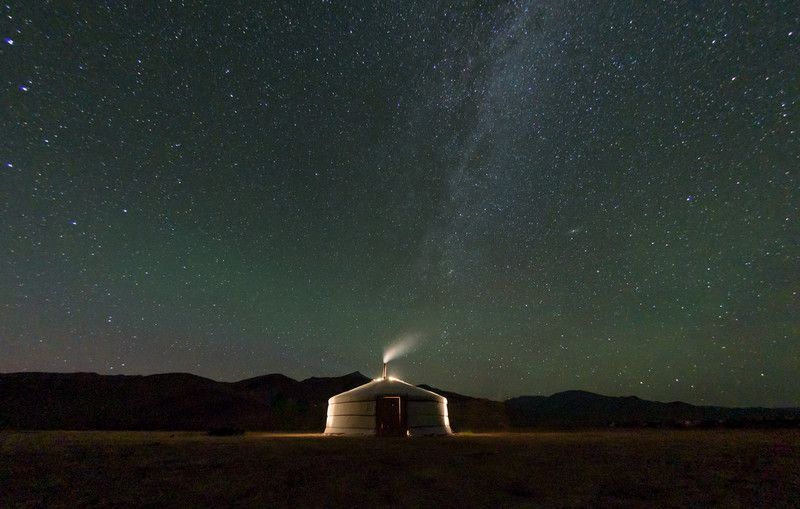
Even with the brilliant Milky Way, the picture seemed a bit mundane. So the last night I tried one more time at about 2 a.m., when the sky was finally clear of clouds. Frustrated by the earlier pictures, I decided to try longer shutter speeds. I had done six-hour time exposures in my film days, where the star trails go the length of the sky, but I had no idea what I’d get.
My first test was awful — I hadn’t focused the camera properly, the flashlight painting was a flop, and the star movement wasn’t right. I was cold and tired but decided I needed to give it one more go.

The result was better than I had anticipated. The light painting was just right. There was enough of a star swirl to add wonder to the night scene. Plus, there was an added bonus — a northern lights glow on the horizon (at least I think that’s what it is)! God had taken my creative staging inadequacy and brought in real life. And once again, real life trumped my staging.
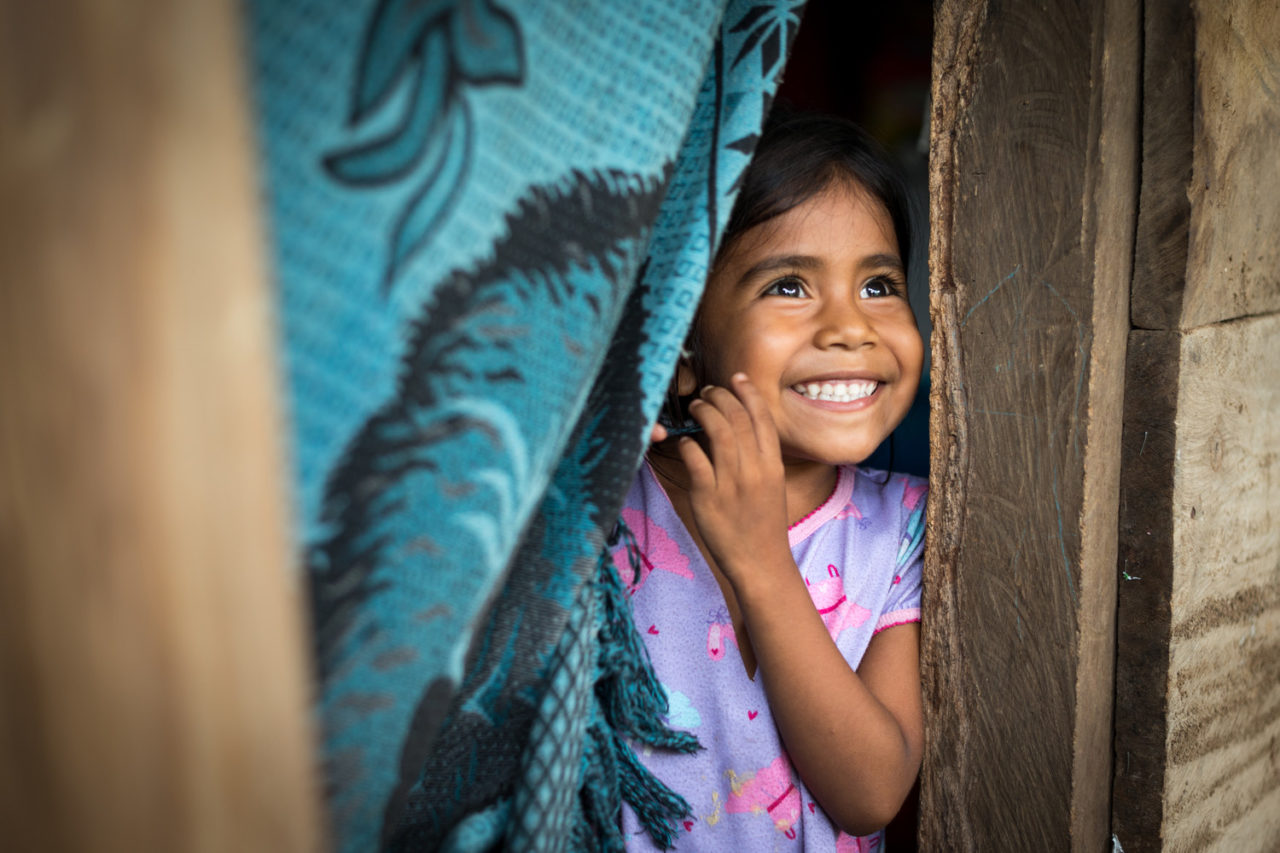
Nicole from Nicaragua
Written and photographed by World Vision photographer Eugene Lee
Nikon D800 camera
50mm lens, 1/200th at f/2.8, 200 ISO
* * *
Often the picture of severe malnutrition is a child from Africa with a thin body or distended belly. However, in Central America, the issue can go unnoticed.
At first glance, 5-year-old Nicole from Nicaragua appears to be normal, but she is short for her age and extremely underweight. At the start of her ready-to-use therapeutic food treatment (RUTF) she weighed only 23.8 pounds. For comparison, my son of the same age weighs 40 pounds.
“I felt worried because I knew that there was a problem with her weight,” Nicole’s mother, Reyna, says. “She was not that active. She didn’t finish her meals.”
Through World Vision’s health monitoring program, Reyna was given a six-week treatment of RUTF for Nicole.
I saw Nicole after she had been eating the fortified peanut butter paste, along with nutrient-rich meals, for three weeks. Her weight was on the upswing. Extreme fatigue was becoming a thing of the past and hope was part of her future.
How could I best capture that sense of optimism in a picture?
Coincidently, I first met Nicole and Reyna on a trip to Nicaragua the previous year. When we met the second time, the look on her face told me she recognized me. I’m sure I had the same expression. It was a fun way to break the ice and put everyone at ease.
On this trip, I was in Nicaragua in advance of a video team shooting a story about how RUTF can help malnourished children. My primary goal was to find children and families who would be comfortable on camera for their shoot.
Some kids were really shy (one girl covered her face every time I glanced her way), but others, like Nicole, warmed up quickly.
“I like drawing. I also like to draw the sun and I also I like to paint,” Nicole says.
I interviewed Reyna and then photographed Nicole eating a packet of RUTF. I also did a few posed portraits, but I still didn’t have anything showing the success of the treatment.
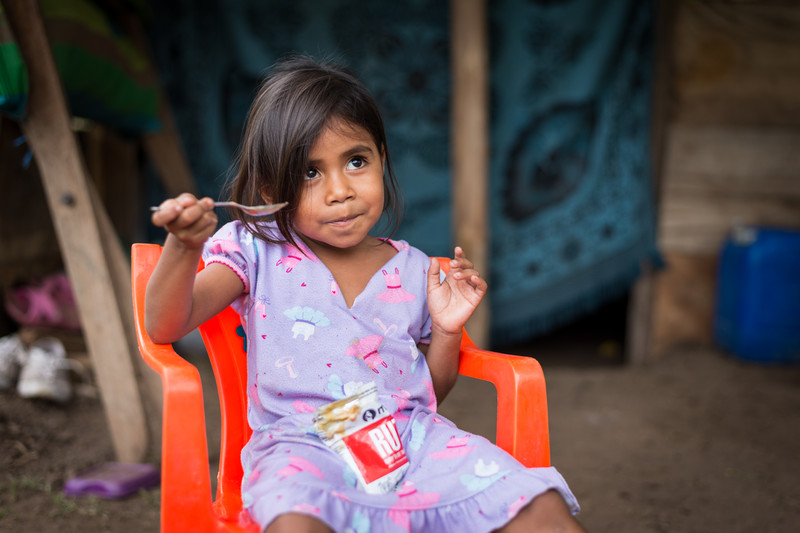
So I waited — and watched.
As my colleagues were casually talking to Reyna, Nicole ran off through the curtain that separates their living area and the patio where we were standing.
When my own kids run off like that, it usually means they are tired. But a few minutes later to my surprise, she playfully popped her head from behind the curtain. I knew this scene had potential, so I moved close to the doorframe and down to her eye level — waiting and watching.
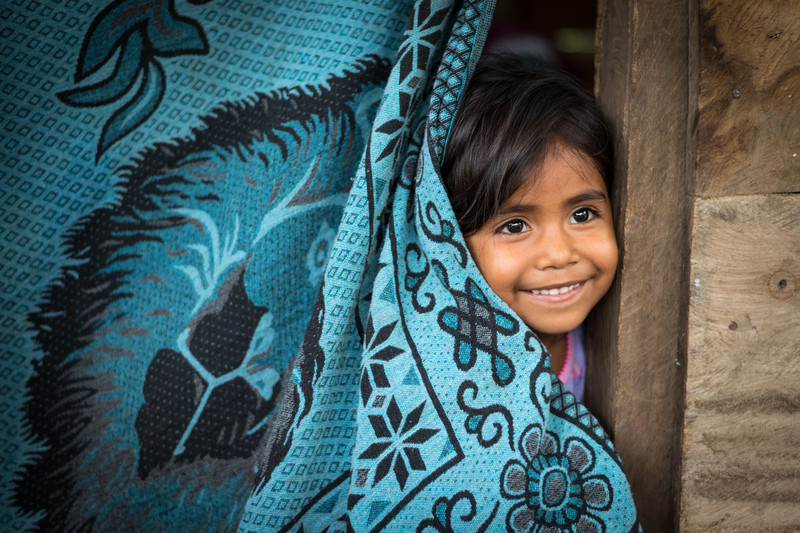
My colleague Miriam, who saw what I was doing, coaxed Nicole to recite the alphabet and sing some children’s songs.
At the start of the day, I had asked Miriam to interact and play with any kids we met while I photographed them. We had worked together before, so I was comfortable having her be part of the scene. I knew from trying to photograph my own kids that taking a child’s attention off the camera — and me — helps them act more natural.
The plan worked perfectly. And after a few minutes, Nicole ran off to another part of the yard, interested in doing something else.
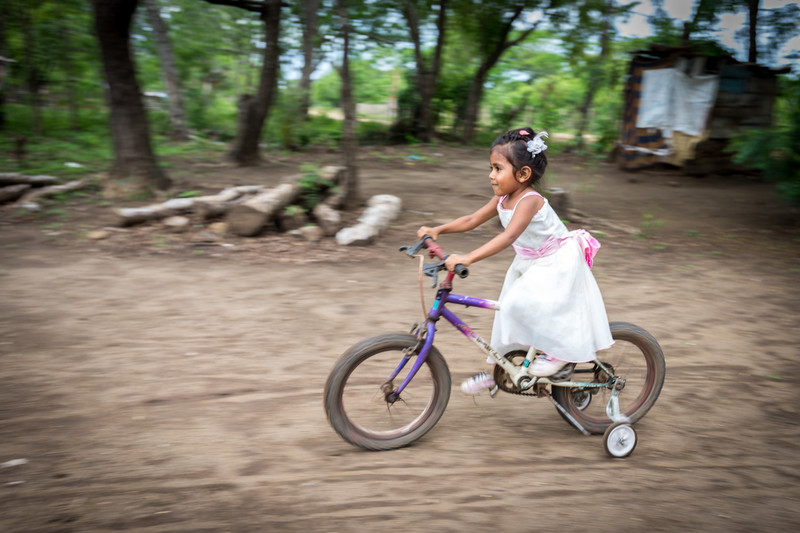
Weeks before, Nicole most likely didn’t have the energy to do simple things such as sing a song or play with other people. But thanks to a simple intervention such as RUTF, the effects of malnutrition can be alleviated and give children their childhood back.
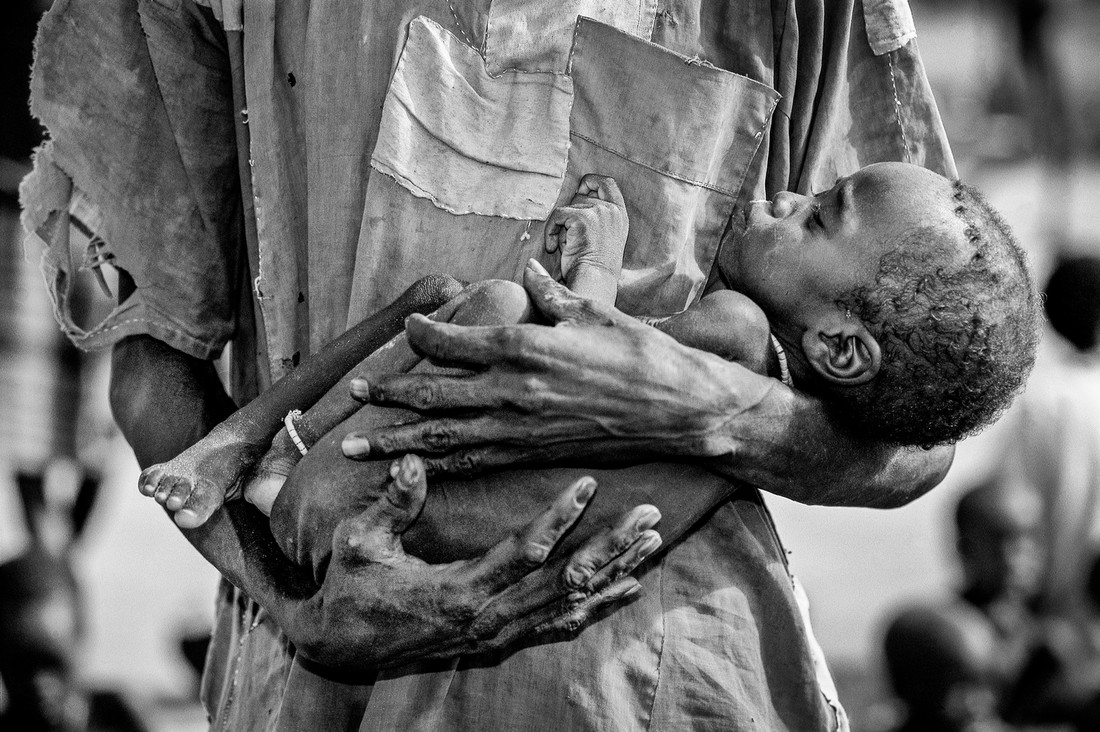
A moment of tenderness amid the suffering in Sudan
Written and photographed by World Vision photographer Jon Warren
Nikon FE camera
80-200mm lens, exposure not recorded; slide film converted to black and white in Lightroom
* * *
Is there a place for photographs that depict human suffering?
Earlier this week on Skype, I followed a thoughtful discussion among some talented African colleagues asking this very question. They were rightfully ashamed of photographs that degrade and demean the subject. Others felt the only reason to show such images is to shock the audience.
I remember my first assignment to Sudan, in 1998, to cover a famine in the region now known as South Sudan. It was so isolated that the only way to get there was a long plane ride from northern Kenya; the plane landed on a dirt strip that was only usable if the rain stopped. I’ve never seen such widespread starvation. An entire region was dying.
Mass starvation is an awful thing to see. I struggled to find anything I could share. I’m an emotional guy, but this was the first time I’d wept so much I worried my pictures would be useless.
I’m an emotional guy, but this was the first time I’d wept so much I worried my pictures would be useless.—Jon Warren, World Vision photographer
Everywhere I looked, children and adults were emaciated skeletons. A stick-figure boy told me everyone else in his family had died on the trek to the feeding center. Babies died while I watched. Bodies of the elderly were hauled away, wrapped in sheets.
More than 2 million people were at risk. They needed immediate food aid and long-term peace. And I was there with a camera, a witness to the horror. If I was silent, how would help come to them?
So I looked for moments of tenderness, of caring, of real humanity, of any hope that I could find. Mothers gently coaxing their emaciated children to eat high-nutrition porridge. Or the subject here: A father came into one of the feeding centers with his child. He himself was in rags, but he cradled his child with tenderness and love.
When I got back to the U.S., I had a heated debate with European colleagues who said the images depicted unsightly stereotypes. I was angry. I asked if they had seen the famine, the dying children. Did they understand that the pictures I was sharing were the least objectionable ones I could find? Would someone give us the millions of dollars needed without seeing the proof in the photos? What would I say to the mothers who were counting on me to tell the world they needed help?
I completely understand objections to pictures that show starving children, especially when the very worst cases are presented as the norm. At World Vision, we work hard to emphasize hope and progress — to show God at work. Even with the Sudan famine story, the second feature we ran in World Vision magazine was one about agricultural solutions that could make Southern Sudan the breadbasket for Africa.
But when the truth is horrible, when injustice and suffering are rampant, those of us who are witnesses have a responsibility to alert the world to what is happening. We need to look through our cameras with love, but we also need to show the truth.
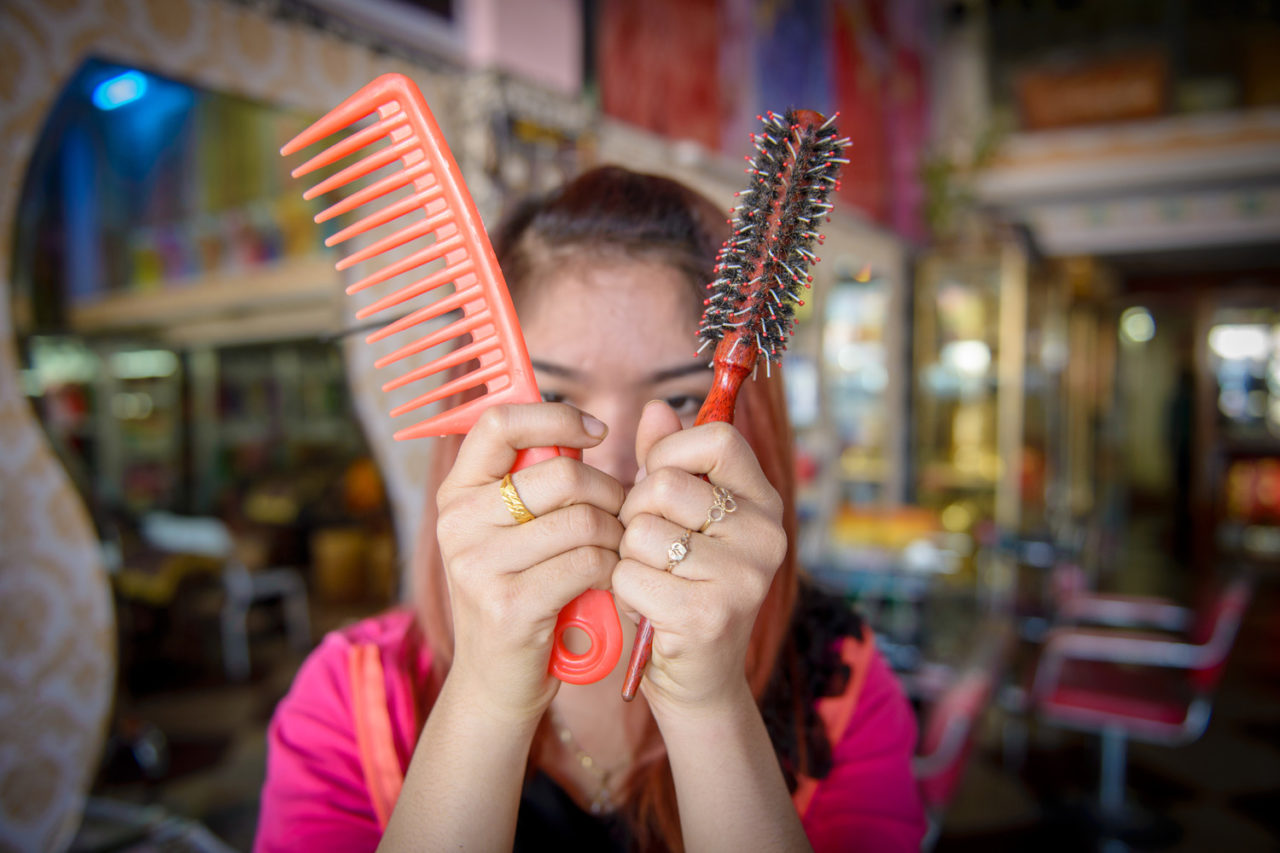
The eyes have it
Written and photographed by World Vision photographer Laura Reinhardt
Nikon D610 camera
24-70mm lens (shot at 29mm), 1/60th at f/2.8, 400 ISO
* * *
Eyes are the windows to the soul. We love to see light of laughter shining in someone’s eyes. Tears welling up enable us to sympathize with a person’s pain. As a photographer, I’m keenly aware of that. So what am I to do when I’m not able to show a subject’s eyes?
That’s the case when I and other World Vision photographers interview and photograph someone who has been trafficked or abused. We change their names to protect their privacy and dignity, and we photograph them in a way that conceals the person’s identity. Of course, there are many ways to do this, but how do you still show the person behind that concealment?
I faced this situation in January of this year when I interviewed Kolab (name changed to protect her identity) in Cambodia. This young woman, now 19, came from a family in poverty. When a friend told her about a job at a Phnom Penh coffee shop, she jumped at the opportunity to help her family by earning some money. She left her village to move to Cambodia’s capital city.
The coffee shop turned out to be the cover for a brothel. After she had been there nearly a year, police raided the brothel, and she and some of the other girls were sent to World Vision’s trauma recovery center. (The center closed in March 2015, but World Vision continues to run other child protection programs in Cambodia.) As part of her rehabilitation, World Vision got her involved in training at a local beauty salon.
There, she learned skills to support herself. I decided to photograph Kolab at the salon because I wanted to show that she had hope and a bright future.
I knew I needed to conceal most of her face to hide her identity in each of the photos. First, I tried photographing her hands working on a customer’s hair, but that didn’t really seem to do the trick. They were just hands, disjointed, unconnected to a person.
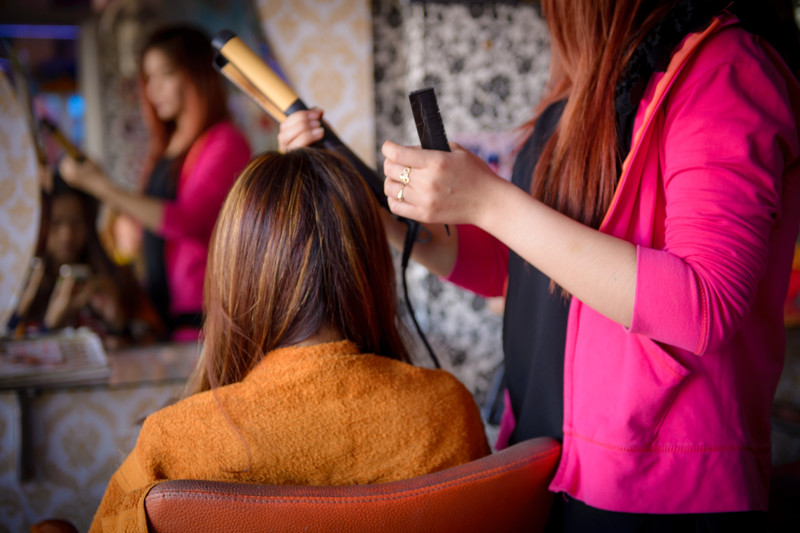
Then I shot a few frames of Kolab and her client from behind with a very shallow depth of field so that, in the mirror, you can see her reflection but she’s not identifiable. I liked this because it made her a whole person and not just disembodied hands.

Then I had one last thought — a more staged portrait. I asked her to hold up some of the tools of her hairstylist trade, tools that represented her future. I made sure the comb and brush obscured her face and then fired off a few frames.
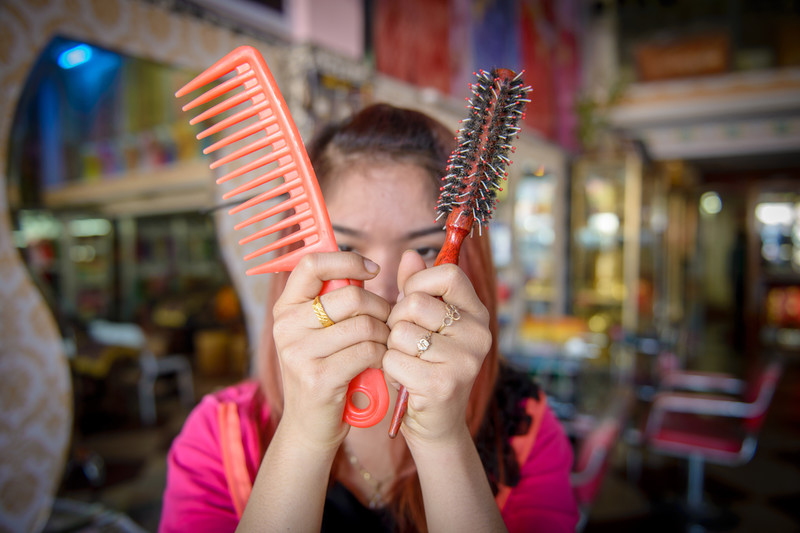
In most of the frames, she’s looking down, but in the final frame, she looked up. That’s the one I chose because even that little hint of her eyes offered that glimpse into her soul that we so long for in portraits of people.
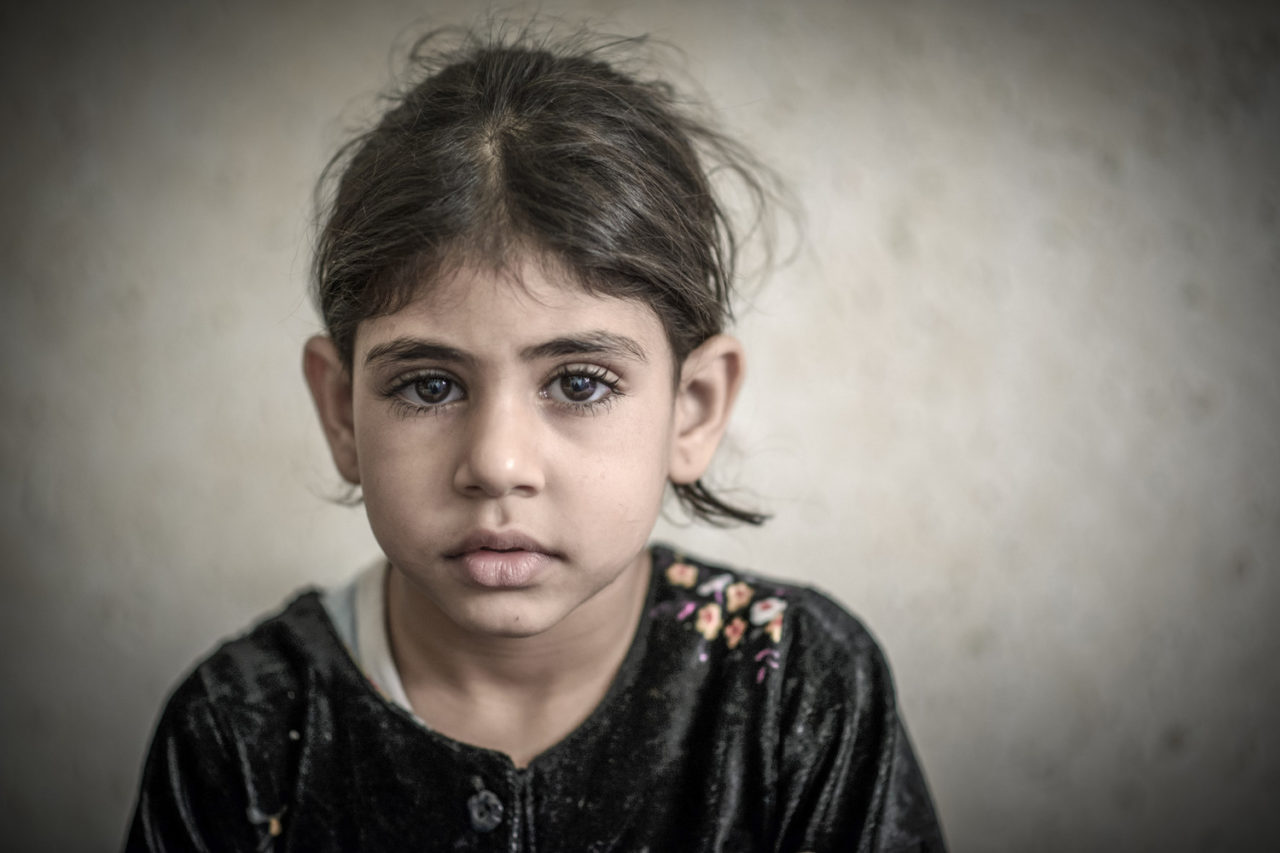
War photography in Jordan
Written and photographed by World Vision photographer Jon Warren
Nikon D600 camera
85mm lens, 1/100th at f/2, 800 ISO
* * *
When you think of classic war coverage, what do you imagine? Graphic scenes of fighting and destruction, plumes of bomb debris, menacing soldiers brandishing guns? Whatever it is, it’s loud, chaotic, and violent.
Six-year-old Lamees is the other face of war. Silent, delicate, and terrified.
Lamees and her family live in a mostly empty room in an abandoned, derelict office building in Zarqa, Jordan, close to the Syrian border. When writer Sevil Omer and I, along with World Vision staff in Jordan, visited the Syrian refugees in 2013, they were sitting on mattresses on the floor — the family’s only furniture. The grandmother was holding Wala’a, age 2. Lamees and her 4-year-old sister, Fatima, were close by. The mother, holding 40-day-old baby Amal, said I was welcome to photograph her children, but that she herself didn’t want to risk appearing on camera. (I had the same response from almost all the Syrian women we met.) Her husband was out looking for work.
They were eager for us to hear their story.
Grandmother was animated as she talked about what the war was doing to her family: “My grandchildren have never had a beautiful day in their lives!”
A torrent of concerns spilled out from the mother too. She told us that Lamees and Fatima rarely talked out loud anymore. When other children cried, they’d curl up with their hands to their ears and rock.
I brought out my Nikon D600 camera slowly and made a few wide shots, watching the reaction of the children. I especially watched Lamees. She had huge, beautiful eyes, but sat like a frightened fawn, looking back intently, just as she had when we first entered the room.
Her grandmother said that when a kind neighbor brought over crayons and a coloring book, Lamees ripped up the pages and broke the crayons.
Fatima was bored and moved closer to the door. I was sitting on the ground, so I moved a little closer and took a few portraits. She didn’t seem to mind.
The women kept talking. I put on an 85mm lens and scooted closer to Lamees, trying to move slowly and deliberately. I took a series of pictures. I’m struggling to find the words to describe how Lamees looked at me. She didn’t seem abused because her gaze at the camera was unwavering, but she was clearly traumatized. She was so vulnerable.
There was a pause in the interview. Sevil moved next to Lamees on the mattress and handed her a pen and page from her notebook. Lamees seemed uninterested. So Sevil gently and tenderly took her hand and traced it on the page. I kept my camera focused on her.
And finally, Lamees smiled.
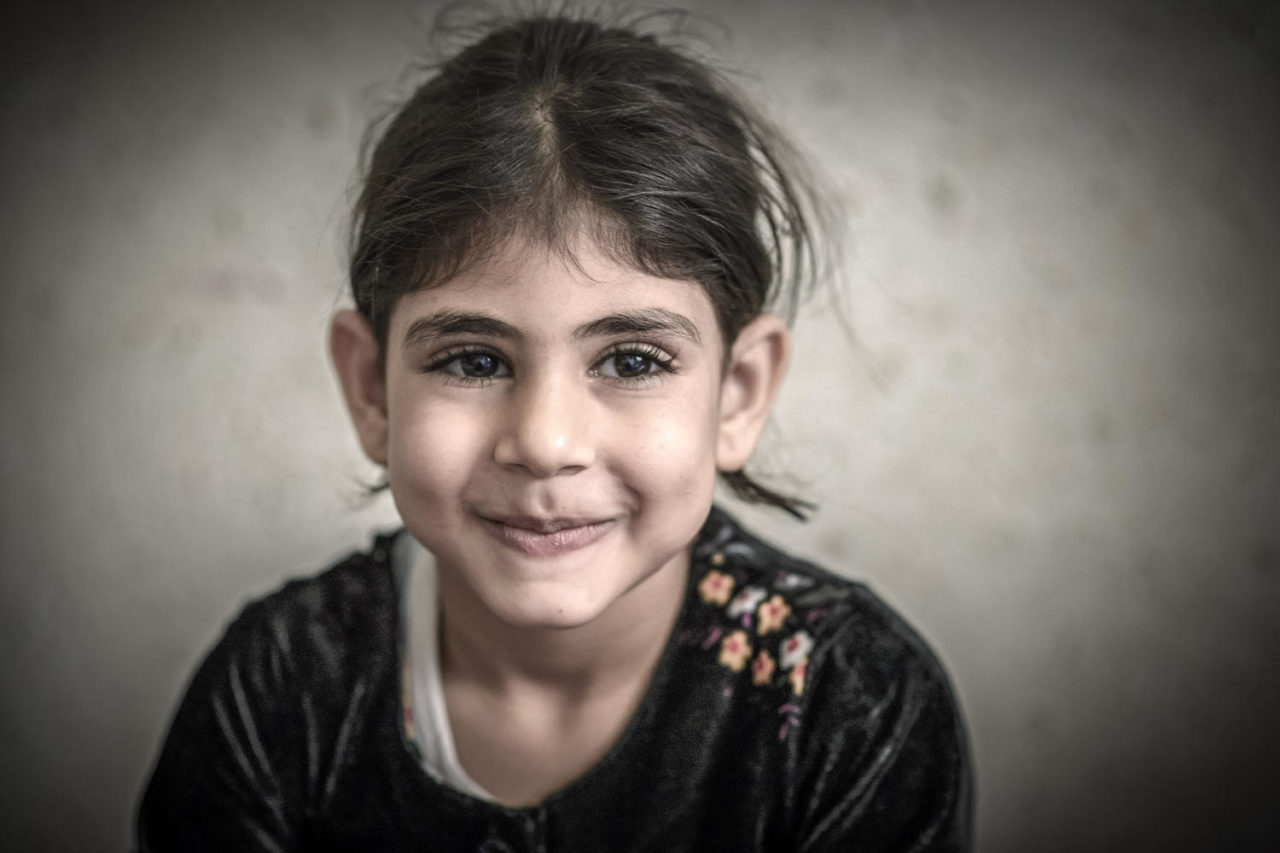
I lost track of time between the first portrait and smile, but the metadata on the pictures says 39 minutes. So for 39 minutes, fragile Lamees stared intently at my camera and hardly moved. And then for a brief moment, we had a flickering glimpse of what the war has stolen from her, what her life could be like — should be like. This is the other face of war.
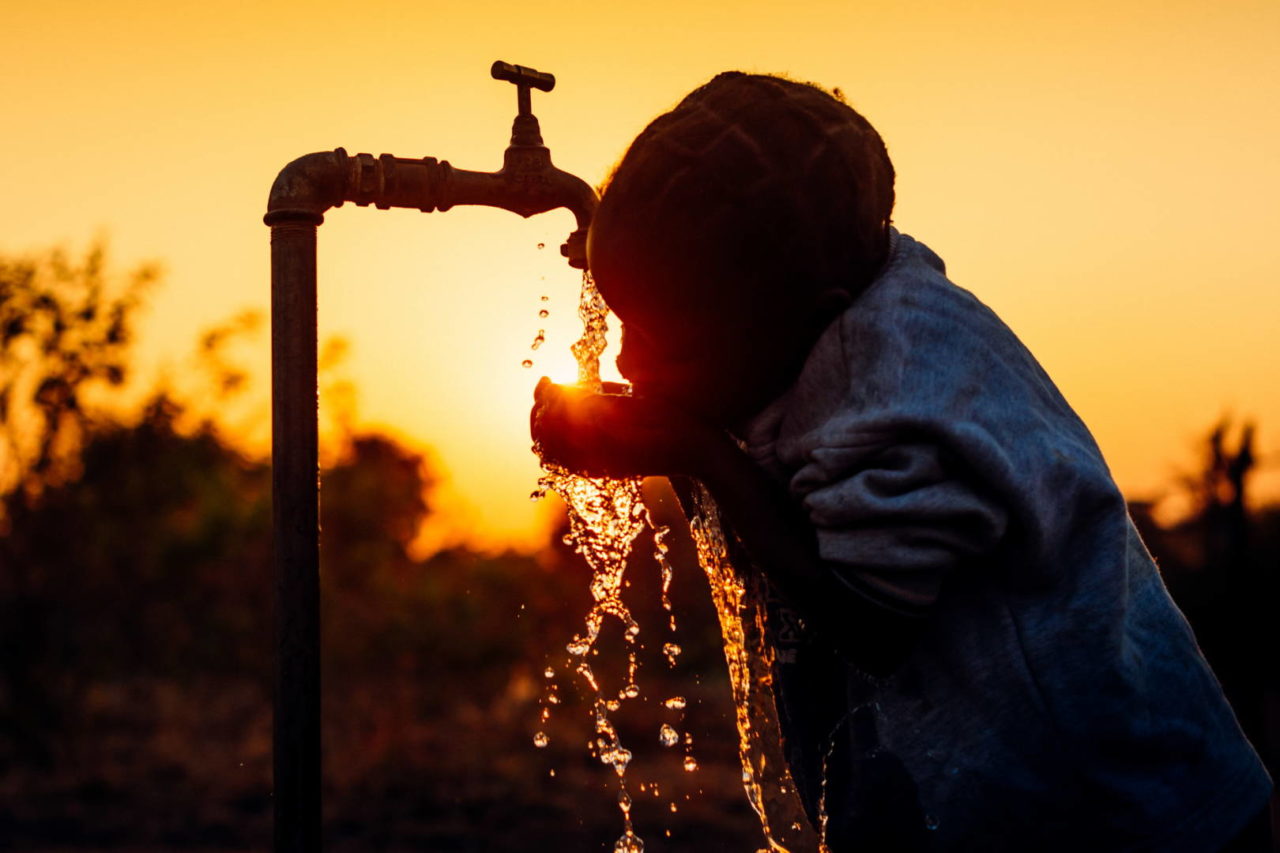
Striking a balance in Zambia
Written and photographed by World Vision photographer Jon Warren
Nikon D810 camera
50mm lens, 1/1250th at f/3.2, 100 ISO
* * *
I already had a picture in my head.
That’s the opposite of the way I usually work. Most of the time I try to empty my mind of preconceived images in order to be open to whatever the situation brings. I want to see the light, to feel people interacting, to notice the unexpected, and then to be ready for the peak moment that tells the story.
But this time I could already visualize the picture. The challenge was finding it. My assignment in Zambia was for a pivotal World Vision magazine feature story on water, and I had to come back with a dynamic cover shot. I pictured golden water flowing from a faucet backlit by a rising or setting sun and a silhouetted child drinking.
So the World Vision staff in Zambia helped me search for the perfect location. We needed an open faucet with a clear view to the horizon in the direction of the rising or setting sun. This was the first big hurdle. Almost all the World Vision-drilled boreholes were topped by hand pumps, and, for sanitary reasons, most of these had walls built around them.
Finally, we found the right faucet in Sinazongwe, next to the home of a sponsored girl, Mutinta. Their massive mango grove faced west, and between the vegetable gardens and the home, I was quite certain I would be able to directly catch the sunrise. The faucet was fed by a solar pump from a World Vision borehole and served nearby families.
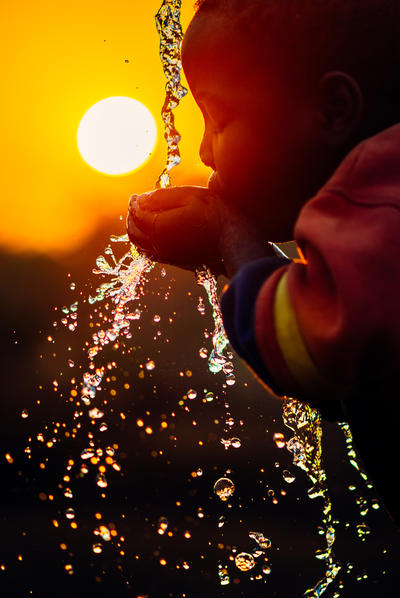
Then disaster struck. From past experience, I knew an out-of-focus rising sun would look much bigger if I used a long telephoto lens. But my primary long lens, my 70-200mm f/2.8, had started acting weird. Violently bumpy roads and years of heavy use had finally taken their toll. The lens stopped focusing on any part of the frame but the center, and even there it wasn’t quite right.
Fortunately, I had a backup 85mm lens with me. My other main lens, my 17-35mm, also malfunctioned on the trip, something I’ve never had happen before in decades of work. These lenses are built for professional abuse, but I’ve learned to always bring backups. So I carry two camera bodies, an all-purpose general lens like a 24-85mm, extra cords, and a second card reader — and I back-up images to at least one extra hard-drive each night.
The next step should have been hard, too. But if you’ve ever met Zambians, you’ll know they are the most gracious, hospitable people on the planet. When I asked World Vision colleagues Davison Phiri and Collins Kaumba (a talented photographer) if they minded waking up with me at 4 a.m. to make the two-plus hour drive back to Mutinta’s house for sunrise, they didn’t hesitate.
We stood by the tap in the dark, waiting for a glimpse of light. Neighborhood kids came to watch the show, so I knew I’d have plenty of subjects to photograph. Someone ran to turn the water on early (it usually doesn’t get turned on till first light).
And then there was a warm glow on the horizon, right where we expected it to be, and everyone scrambled into action. Close to the equator, the sun seems to race up and down much faster than I’m used to here in the north, so I only had about 20 minutes to work. We put a bucket under the tap and turned it on full force. Kids took turns drinking or standing by the tap, while others whisked full buckets of to water the nearby vegetable plot.
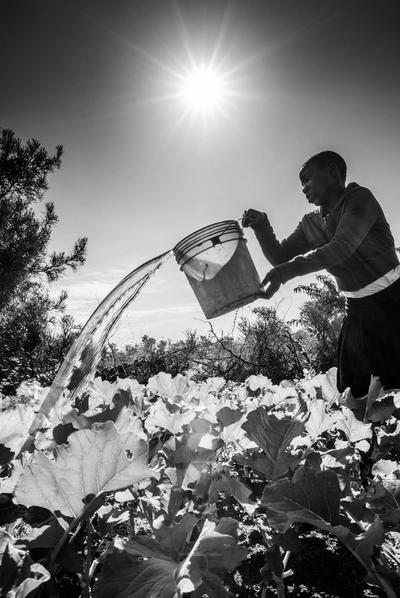
It was a blast, a group performance.
I alternated between an 85mm and 50mm lens, using a high shutter speed to freeze water drops. I metered off the sky away from the sun to keep the kids in silhouette, trying to focus carefully while looking right into the sun. With the 85mm I used as large an aperture as possible to try to make the sun prominent. I used a bigger depth-of-field with the 50mm, hoping to overcome focus challenges with the wiggly kids. I missed having a good tripod — that would have made it so much easier. Next time …
The balance between preconceived pictures and spontaneous moments is a delicate one. In this case, I was trying to illustrate a concept, to create an iconic image, and I was careful to pick an actual World Vision tap and kids from our project area who really drink from it. But the only backup I have for a controlled set-up is another created one, and my imagination and directorial abilities are limited. This time, the rising sun, the flowing water, and the sweet kids came through for me.
Read more testimonies from World Vision photographers in our Life Frames series.
